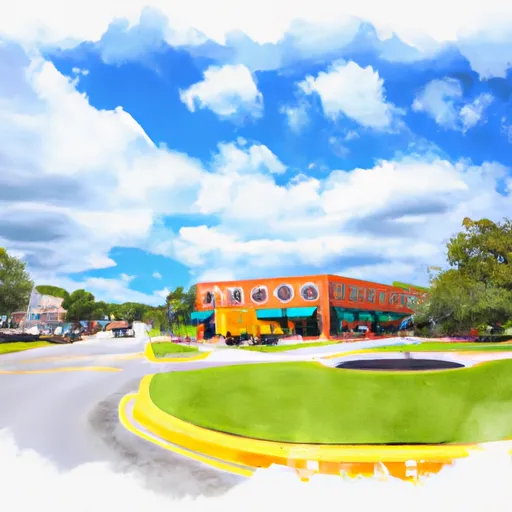-
 Snoflo Premium
Snoflo Premium
Get unlimited access to all our content
With no Ad interruptions! - Start Your Free Trial Login with existing account
Hilliard
Eden Index
Climate
7.9
•
Recreation
3.8
•
Community
1.4
•
Safeguard
4.8/10

Hilliard, Florida is a small town located in Nassau County, in the northeastern part of the state. The climate in Hilliard is characterized as humid subtropical, with hot and humid summers and mild winters. Average temperatures range from 50°F in winter to 92°F in summer. The region experiences abundant rainfall throughout the year, with an average of 52 inches annually.
Hilliard is surrounded by a diverse hydrology, with several rivers and lakes in the area. The St. Marys River is the most prominent water body, which serves as a natural boundary between Florida and Georgia. It offers opportunities for fishing, boating, and kayaking. Additionally, Black Creek and Lofton Creek are nearby waterways that provide scenic views and recreational activities.
Outdoor enthusiasts in Hilliard can explore the vast natural beauty of nearby parks and preserves. The Cary State Forest offers hiking, biking, and horseback riding trails, as well as hunting and fishing areas. Osprey Pointe Conservation Area is another popular spot for birdwatching, nature walks, and picnicking. With its pleasant climate and diverse hydrology, Hilliard provides ample opportunities for outdoor recreation and enjoyment of nature.
What is the Eden Index?
The Snoflo Eden Index serves as a comprehensive rating system for regions, evaluating their desirability through a holistic assessment of climate health, outdoor recreation opportunities, and natural disaster risk, acknowledging the profound impact of these factors on livability and well-being.
Climate Health Indicator (CHI): 7.9
Hilliard receives approximately
1291mm of rain per year,
with humidity levels near 85%
and air temperatures averaging around
20°C.
Hilliard has a plant hardyness factor of
8, meaning
plants and agriculture in this region tend to thrive here all year round.
By considering the ideal temperature range, reliable water supplies, clean air, and stable seasonal rain or snowpacks, the Climate Health Indicator (CHI) underscores the significance of a healthy climate as the foundation for quality living.
A healthy climate is paramount for ensuring a high quality of life and livability in a region, fostering both physical well-being and environmental harmony. This can be characterized by ideal temperatures, reliable access to water supplies, clean air, and consistent seasonal rain or snowpacks.
Weather Forecast
Streamflow Conditions
St. Marys - Satilla
Area Rivers
St. Marys - Satilla
Snowpack Depths
St. Marys - Satilla
Reservoir Storage Capacity
St. Marys - Satilla
Groundwater Levels
Recreational Opportunity Index (ROI): 3.8
The Recreational Opportunity Index (ROI) recognizes the value of outdoor recreational options, such as parks, hiking trails, camping sites, and fishing spots, while acknowledging that climate plays a pivotal role in ensuring the comfort and consistency of these experiences.
Access to outdoor recreational opportunities, encompassing activities such as parks, hiking, camping, and fishing, is crucial for overall well-being, and the climate plays a pivotal role in enabling and enhancing these experiences, ensuring that individuals can engage in nature-based activities comfortably and consistently.
Camping Areas
| Campground | Campsites | Reservations | Toilets | Showers | Elevation |
|---|---|---|---|---|---|
| Salt Springs | 267 | 26 ft | |||
| Lake Eaton | 22 | 45 ft | |||
| Shanty Pond Recreation Area | 120 | 34 ft | |||
| Gores Landing County Park | None | 31 ft | |||
| Kenwood Rec Area | None | 22 ft | |||
| Lake Delancy | 28 | 30 ft | |||
| Rodman Rec Area | None | 68 ft | |||
| Fore Lake | 100 | 82 ft | |||
| Mike Roess Gold Head State Park | None | 216 ft | |||
| Silver River State Park | 59 | 63 ft |
Catastrophe Safeguard Index (CSI):
The Catastrophe Safeguard Index (CSI) recognizes that natural disaster risk, encompassing floods, fires, hurricanes, and tornadoes, can drastically affect safety and the overall appeal of an area.
The level of natural disaster risk in a region significantly affects safety and the overall livability, with climate change amplifying these risks by potentially increasing the frequency and intensity of events like floods, fires, hurricanes, and tornadoes, thereby posing substantial challenges to community resilience and well-being.
Community Resilience Indicator (CRI): 1.4
The Community Resilience Indicator (CRI) recognizes that education, healthcare, and socioeconomics are crucial to the well-being of a region. The CRI acknowledges the profound impact of these elements on residents' overall quality of life. By evaluating educational resources, healthcare accessibility, and economic inclusivity, the index captures the essential aspects that contribute to a thriving community, fostering resident satisfaction, equity, and social cohesion.

